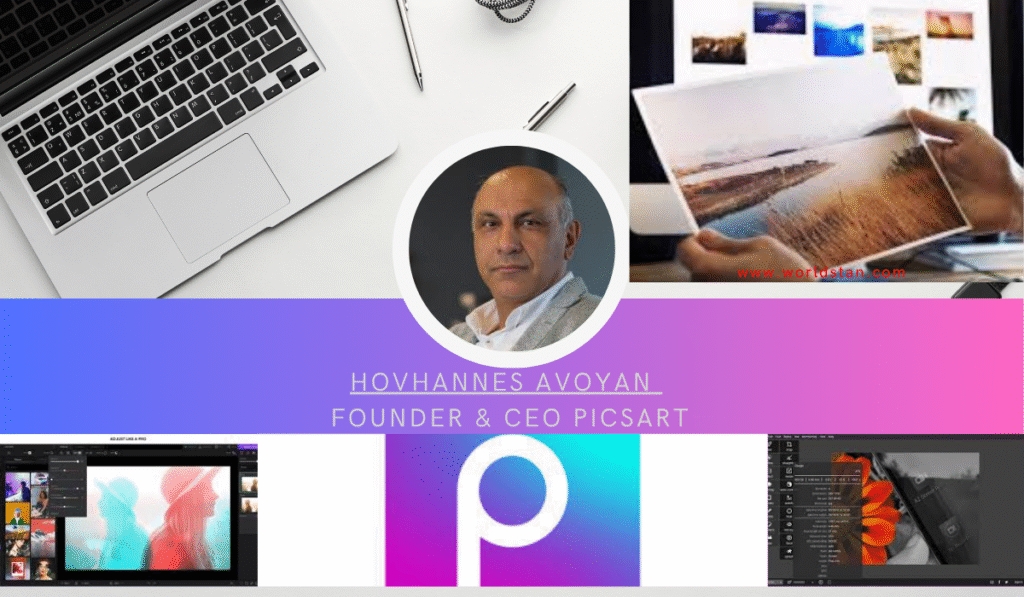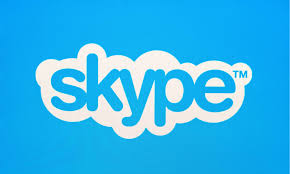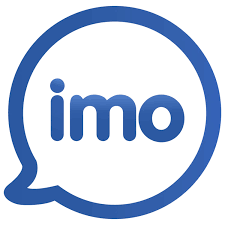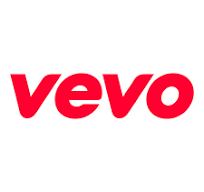
- When was Pinterest founded, and where is its headquarters located?
- How many users does Pinterest attract globally, and how many are from the U.S.?
- What is the primary purpose of Pinterest?
- Who are the founders of Pinterest?
- What was Pinterest’s previous app, and what led to its evolution?
- When was Pinterest launched as a closed beta?
- What significant recognition did Pinterest receive in August 2011?
- When did Pinterest enter the top 10 largest social networks list?
- What milestone did Pinterest achieve in January 2012 regarding unique U.S. visitors?
- When was the invitation requirement dropped for Pinterest?
- What major feature was removed from Pinterest in April 2017?
- When did Pinterest go public, and at what price per share?
- What was the percentage increase in Pinterest’s advertising revenue in 2020?
- When was Pinterest’s “Pinterest Premiere” video ads product introduced?
- Which company showed interest in acquiring Pinterest in October 2021?
- What was the purpose of Pinterest’s acquisition of the Vochi app in December 2021?
- Who transitioned to Executive Chairman of Pinterest in June 2022?
- What strategic partnership did Pinterest announce in January 2023?
- How did Pinterest handle copyright concerns?
- What legal status did Pinterest assert regarding copyright issues?

Introduction to Pinterest:
Founded in 2009 in the United States, Pinterest has established itself as a visual discovery and bookmarking platform, attracting a user base of 450 million individuals globally. This unique platform enables users to curate and share content based on their interests through virtual pinboards. Notably, Pinterest sees active engagement from 98 million users on a monthly basis within the U.S., underscoring its significance as a go-to destination for users seeking inspiration and creative ideas. The platform’s combination of visual appeal and user-friendly functionality contributes to its sustained popularity and role in fostering a visually-driven online community. Founded by Ben Silbermann, Paul Sciarra, and Evan Sharp, Pinterest, Inc. has its headquarters located in San Francisco, California.

History:
Evolution of Pinterest: A Detailed Chronology
The journey of Pinterest from its inception to becoming a major player in the social networking and e-commerce space is both fascinating and instructive. Below is a detailed chronology, laid out in table format, highlighting key milestones and developments.
Date | Event |
Dec 2009 | Development of Pinterest begins, evolving from a previous app called Tote, which struggled due to early mobile payment technology limitations. |
Mar 2010 | Pinterest is launched as a closed beta. The innovative concept allowed users to create and share collections of items, diverging from Tote’s original catalog focus. |
Mar 2011 | Introduction of an iPhone app significantly boosts Pinterest’s user base, followed by the release of an iPad app and a mobile version for non-iPhone users. |
Summer 2011 | Operation of the site moves out of a small apartment as the team and its ambitions grow. |
Aug 10, 2011 | Recognition by Time magazine as one of the “50 Best Websites of 2011,” signaling Pinterest’s entry into the mainstream. |
Dec 2011 | Pinterest enters the top 10 largest social networks list, with 11 million weekly visits. It’s also named Best New Startup of 2011 at the TechCrunch Crunchies Awards. |
Jan 2012 | Achieves a milestone of 11.7 million unique U.S. visitors, becoming the fastest site to surpass 10 million unique visitors. |
Mar 23, 2012 | Updates to the terms of service reflect a more user-friendly approach to content rights. |
Aug 10, 2012 | Invitation requirement dropped, opening up Pinterest to a broader audience. |
Oct 2012 | Launch of business accounts, catering to the needs of brands and businesses on the platform. |
Apr 2017 | The “like” feature is removed to streamline user experience, emphasizing the use of boards for content organization. |
Feb 2019 | Pinterest secretly files for an IPO, with a valuation reaching $12 billion. |
Apr 18, 2019 | Goes public at $19 per share, closing the day at $24.40, marking a significant milestone in the company’s history. |
2020 | Reports a 48% increase in advertising revenue, amounting to $1.7 billion. |
Mar 3, 2021 | Introduction of “Pinterest Premiere,” a video ads product aimed at enhancing targeted advertising within the platform. |
Oct 20, 2021 | Reports indicate PayPal’s interest in acquiring Pinterest at approximately $70 per share, although the deal did not proceed. |
Dec 2021 | Acquisition of the video creation app Vochi to enhance Pinterest’s video content capabilities. |
May 2022 | Launch of “Pinterest TV studio” app for live-streaming, indicating a foray into real-time video content. |
Jun 28, 2022 | Ben Silbermann transitions to Executive Chairman, with Bill Ready taking over as CEO, signaling a new leadership era focused on online commerce. |
Jan 2023 | Partnership with LiveRamp announced at CES, introducing data ‘clean rooms’ for safer, personalized ad experiences without compromising user data privacy. |
This timeline encapsulates Pinterest’s transformation from a struggling startup into a pioneering social media and e-commerce platform. Through innovation, strategic pivots, and a keen understanding of its user base, Pinterest has cemented its place in the digital landscape.
Growth and Financial Developments of Pinterest: A Comprehensive Overview
Here’s a detailed breakdown of Pinterest’s growth, financial milestones, and strategic partnerships, presented in chronological order with unique headings and organized in table format:
Date | Event |
2012 | Pinterest relocates its headquarters from Palo Alto to San Francisco, California, marking a significant step in its corporate journey. |
Early 2011 | Pinterest successfully secures a Series A financing round amounting to US$10 million. Spearheaded by notable investors Jeremy Levine and Sarah Tavel from Bessemer Venture Partners, this funding round marks a pivotal moment for Pinterest, setting the stage for its subsequent expansion and development. Top of Form |
Oct 2011 | Andreessen Horowitz invests US$27 million in Pinterest, valuing the company at US$200 million, indicating investor confidence in its potential. |
Apr 2012 | Co-founder Paul Sciarra steps down from his position at Pinterest to join Andreessen Horowitz as an entrepreneur in residence, contributing to the company’s strategic evolution. |
May 17, 2012 | Rakuten, a Japanese e-commerce giant, leads a $100 million investment round in Pinterest, alongside other investors, boosting the company’s valuation to $1.5 billion. |
Sep 20, 2012 | Pinterest appoints Jon Jenkins, a former Amazon executive, as its new head of engineering, signaling a focus on strengthening its technical capabilities and infrastructure. |
Late Oct 2013 | Pinterest secures a substantial $225 million round of equity funding, valuing the platform at $3.8 billion, affirming its position as a major player in the tech landscape. |
2014 | Pinterest begins generating revenue by charging advertisers to promote their products and services on the platform, marking a significant milestone in its monetization efforts. |
2015 | Investors value Pinterest at $11 billion, catapulting it into the coveted “unicorn” status, denoting its rapid rise and immense potential in the market. |
2017 | Pinterest’s valuation reaches $12 billion, further solidifying its stature as a prominent player in the tech industry. |
Jun 2017 | Pinterest raises $150 million in funding from existing investors, demonstrating continued confidence and support from its financial backers. |
Aug 2020 | Pinterest pays $89.5 million to cancel a significant office space lease, showcasing its adaptability and strategic decision-making amidst changing business environments. |
Apr 2023 | Pinterest announces a strategic partnership with Amazon, enabling the display of third-party advertisements on its platform, facilitating seamless redirection for users to make purchases. |
This timeline encapsulates Pinterest’s journey from its early stages of fundraising and strategic hires to its significant valuation milestones and key partnerships, highlighting its evolution into a major player in the digital advertising and e-commerce landscape.
Pinterest's Strategic Acquisitions: A Comprehensive Overview
Here’s a detailed breakdown of Pinterest’s strategic acquisitions, presented in chronological order with unique headings and organized in table format:
Date | Acquisition | Details |
March 2013 | Livestar | Pinterest acquires Livestar, a company specializing in social recommendations and ratings. The terms of the acquisition were not disclosed, marking an early strategic move by Pinterest to enhance its recommendation capabilities. |
Early Oct 2013 | Hackermeter | Pinterest acquires Hackermeter, a platform focused on technical recruiting assessments. The co-founders, Lucas Baker and Frost Li, join Pinterest as engineers, contributing their expertise to the company’s engineering efforts. |
April 2015 | Hike Labs Team | Pinterest acquires the team from Hike Labs, developers of the mobile publishing application Drafty. This acquisition underscores Pinterest’s commitment to enhancing its mobile publishing and content creation capabilities. |
May 2016 | URX | Pinterest acquires URX, a mobile deep linking startup, to bolster its content understanding endeavors. The URX team’s expertise in mobile content discovery and recommendation becomes instrumental in refining Pinterest’s content recommendation algorithms. |
August 23, 2016 | Instapaper Team | Pinterest announces the acquisition of the team behind Instapaper, a popular bookmarking and content discovery platform. The Instapaper team will continue operating as a separate entity while also contributing to enhancing Pinterest’s core experience. |
March 8, 2017 | Jelly Industries | Pinterest acquires Jelly Industries, a search-engine company founded by Biz Stone. This strategic acquisition aims to leverage Jelly’s expertise in search technology to enhance Pinterest’s search functionalities and overall user experience. |
December 2021 | Vochi App | Pinterest announces the acquisition of the Vochi app, enhancing its capabilities in editing and video creation. This acquisition aligns with Pinterest’s focus on enriching its platform with interactive and engaging visual content. |
June 2022 | The Yes | Pinterest enters a definitive agreement to acquire The Yes, an AI-driven fashion shopping platform based in San Francisco. The acquisition, completed on June 10, 2022, signifies Pinterest’s strategic move to strengthen its presence in the fashion e-commerce sector through AI-driven recommendations. |
This overview provides insights into Pinterest’s strategic acquisitions, highlighting its efforts to augment its platform with cutting-edge technology and talent, ultimately aiming to enrich the user experience and drive growth in key areas such as content discovery and e-commerce.
Criticism of Pinterest: Analyzing Legal, Ethical, and Cultural Concerns
Copyrighted Content:
Pinterest’s approach to copyrighted material has sparked debates regarding its compliance with the Digital Millennium Copyright Act (DMCA). Despite offering a notification system for copyright holders to request removal of content, Pinterest’s active encouragement of users to pin images from the internet raises questions about its safe harbor status. Users, in turn, face potential legal

repercussions for pinning copyrighted material. The introduction of the “nopin” HTML meta tag aimed to address this issue, allowing websites to opt out of having their images pinned.
Legal Status:
Legal concerns were further heightened when photographer and lawyer Kirsten Kowalski’s blog post gained traction, prompting scrutiny of Pinterest’s adherence to copyright law. Kowalski’s interpretation led her to delete all infringing pins, drawing attention to the platform’s legal status. Pinterest attempted to alleviate these concerns by asserting its protection under the DMCA’s safe harbor provisions.
Terms of Service:
Pinterest’s earlier terms of service raised eyebrows due to their ambiguous assertion of ownership over user content. The company’s claim of perpetual ownership clashed with its denial of any ownership rights. Following criticism, Pinterest revised its terms of service to clarify users’ rights and the platform’s intentions regarding content ownership.
Use by Scammers:
Pinterest has also faced criticism for its susceptibility to scams, with scammers exploiting users through social engineering tactics. Phishing schemes involving promises of free products in exchange for completing surveys highlight the platform’s vulnerability to fraudulent activities.
Censorship:
Pinterest’s censorship practices have come under scrutiny, with instances of blocks imposed by Chinese authorities during politically sensitive periods. Similar blocks in India, driven by concerns over copyright infringement, reflect broader challenges faced by the platform in navigating international regulations and cultural sensitivities.
Content Policies and User Bans:
The platform’s content policies and user bans have evolved in response to various issues, including health misinformation and discrimination. Pinterest’s efforts to combat misinformation have led to restrictions on content related to unproven cancer treatments and anti-vaccination rhetoric. Additionally, the platform has taken steps to address discriminatory content and behaviors, including banning anti-abortion groups and restricting wedding-related content associated with former slave plantations.
Culture of Discrimination:
Pinterest has faced allegations of fostering a culture of discrimination, with former employees speaking out about experiences of racism, unequal pay, and retaliation for raising concerns. Publicized incidents, such as a virtual walkout by staff and multi-million-dollar settlements for discrimination lawsuits, underscore ongoing challenges related to diversity and inclusion within the company.
In summary, Pinterest’s journey has been marked by legal, ethical, and cultural challenges, highlighting the complexities inherent in managing a global social media platform while navigating issues of copyright, censorship, and discrimination.
Conclusion:
Pinterest, established in 2009 in the United States, has evolved into a prominent visual discovery and bookmarking platform, boasting a global user base of 450 million individuals. Its unique concept allows users to curate and share content based on their interests, fostering a vibrant online community centered around creativity and inspiration. With 98 million monthly active users in the U.S. alone, Pinterest has solidified its position as a leading destination for users seeking innovative ideas and visual inspiration.
The platform’s journey, spearheaded by founders Ben Silbermann, Paul Sciarra, and Evan Sharp, has been marked by significant milestones and strategic pivots. From its humble beginnings in a small apartment to its recognition by Time magazine as one of the “50 Best Websites of 2011,” Pinterest’s trajectory reflects its relentless pursuit of innovation and user-centric design.
Pinterest’s growth and financial developments further underscore its ascent in the digital landscape. Strategic partnerships, such as the acquisition of Livestar and Hackermeter, have bolstered its capabilities in recommendation and technical recruitment assessments. Additionally, key financial milestones, including successful fundraising rounds and a landmark IPO in 2019, have solidified Pinterest’s position as a major player in the tech industry.
However, Pinterest has not been immune to criticism and challenges. Concerns over copyright infringement, censorship, and discrimination have prompted scrutiny and debate. Legal ambiguities surrounding copyrighted content and the platform’s terms of service have raised questions about its compliance with regulations and user rights. Moreover, instances of censorship in countries like China and India, coupled with allegations of fostering a culture of discrimination, underscore the complexities inherent in managing a global social media platform.
In conclusion, Pinterest’s journey is a testament to the power of innovation and community-building in the digital age. While it has faced its share of challenges, its commitment to creativity, inspiration, and inclusivity remains steadfast. As it continues to evolve and adapt to an ever-changing landscape, Pinterest is poised to shape the future of visual discovery and online expression.
FAQs:
- What is the background of Pinterest’s founders?
- Pinterest was founded in 2009 in the United States by Ben Silbermann, Paul Sciarra, and Evan Sharp.
- What is the primary purpose of Pinterest?
- Pinterest serves as a visual discovery and bookmarking platform, allowing users to curate and share content based on their interests through virtual pinboards.
- How many users does Pinterest attract globally, and what is its active user base within the U.S.?
- Pinterest has attracted a user base of 450 million individuals globally. Within the U.S., it sees active engagement from 98 million users on a monthly basis.
- Where is Pinterest, Inc. headquartered?
- Pinterest, Inc. is headquartered in San Francisco, California.
- Can you provide a brief overview of Pinterest’s history and evolution?
- Pinterest began development in December 2009, evolving from a previous app called Tote. It was launched as a closed beta in March 2010 and saw significant growth after the introduction of its iPhone app in March 2011. Over the years, it has achieved various milestones, including recognition by Time magazine and successful fundraising rounds.
- What significant financial developments have occurred in Pinterest’s journey?
- Pinterest has experienced significant financial milestones, including successful fundraising rounds, strategic investments, and reaching a valuation of $12 billion. It also generated revenue through advertising and formed partnerships with companies like Amazon.
- How has Pinterest expanded its capabilities through strategic acquisitions?
- Pinterest has strategically acquired companies like Livestar, Hackermeter, Instapaper, and Vochi App to enhance its recommendation capabilities, content understanding, and video content capabilities. These acquisitions have contributed to enriching the user experience and driving growth in key areas.
- What are some of the legal, ethical, and cultural concerns associated with Pinterest?
- Pinterest has faced criticism regarding its approach to copyrighted content, legal status under the Digital Millennium Copyright Act (DMCA), terms of service, susceptibility to scams, censorship practices, content policies, user bans, and allegations of fostering a culture of discrimination.
- How has Pinterest addressed these concerns?
- Pinterest has introduced measures such as a notification system for copyright holders, revisions to its terms of service, and efforts to combat misinformation and discriminatory content. However, challenges persist as the platform navigates complex legal, ethical, and cultural landscapes.
- What does the journey of Pinterest reflect about managing a global social media platform?
- Pinterest’s journey underscores the complexities involved in managing a global social media platform, including navigating issues of copyright, censorship, and discrimination while striving to maintain a user-friendly and inclusive environment.

Prof. Mian Waqar Ahmad
Prof. Mian Waqar Ahmad, a dynamic force straddling the realms of academia and digital media. As a distinguished Lecturer in Information Sciences, he imparts knowledge within the academic sphere, igniting the minds of his students. Beyond the classroom, Prof. Mian Waqar Ahmad dons the hat of a seasoned blogger on Worldstan.com, where his insightful posts delve into the intricacies of information sciences. His digital footprint extends even further as a YouTuber, leveraging the platform to share his expertise and make complex concepts accessible to a global audience. Prof. Mian Waqar Ahmad’s journey embodies the fusion of traditional education and contemporary digital outreach, leaving an indelible mark on the evolving landscape of information sciences. Explore his world at Worldstan.com and witness the convergence of academia and the digital frontier.


































